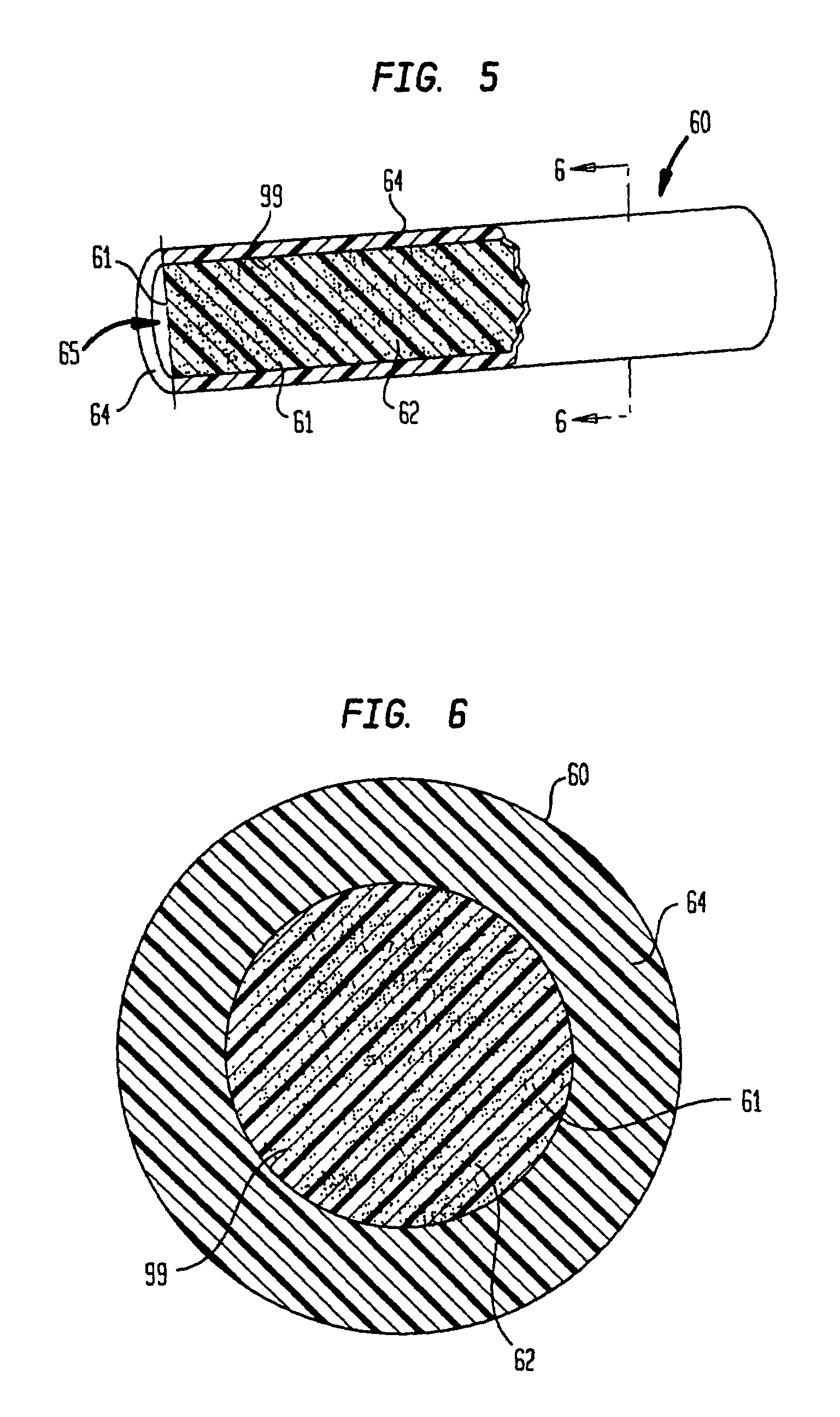Polymeric-matrix brachytherapy sources
a technology of polymer matrix and brachytherapy, which is applied in the field of therapeutic radiology, can solve the problems of exposing medical personnel and other persons coming into contact with patients, presenting potential toxic consequences to patients, and significant doses of potentially harmful radiation, etc., and achieves simple and inexpensive methods, simple and safer methods, and predetermined degree of flexibility
- Summary
- Abstract
- Description
- Claims
- Application Information
AI Technical Summary
Benefits of technology
Problems solved by technology
Method used
Image
Examples
example 1
[0136]A therapeutic source is produced in the form of a right circular cylindrical rod, manufactured to have a preselected degree of flexibility, with a diameter of 0.8 mm, a selectable length and activity of 1 millicurie of Pd-103 per cm of length. The radioactive composite is prepared by first creating the Pd-103 activity required and then synthesizing the radioactive particulate.
[0137]The creation, separation and purification of the Pd-103 required is carried out according to the method of Carden as reported in U.S. Pat. No. 5,405,309. The essentially isotopically pure Pd-103 derived from the method of Carden is then added to the amount of palladium chloride required to form the desired mass of radioactive particulate. For example, if 30 Curie of Pd-103 is introduced into the process, and a specific activity of 60 Curies per gram is desired, 0.50 grams of palladium must be supplied in the palladium chloride since the palladium mass associated with the Pd-103 is negligible. If the...
example 2
[0143]A therapeutic source in the form of a sheet or film can be fabricated from the radioactive composite by extrusion. A procedure for carrying out this fabrication involves first preparing a rod as in Example 1 such that the activity per unit volume of the rod will, when extruded into a sheet or film provide the activity per unit area of film desired. For example, if a film 0.03 mm in thickness with an activity of 1 mCi per square centimeter on the first day of delivery is desired, rod must be prepared as above containing 1 mCi in 0.003 ml of rod or about 1.7 mCi per cm of rod. The film is then prepared from the rod by chopping the rod into short pellets, carefully drying the pellets, adding any additional polymer required to obtain the desired activity and extruding the plastic by normal techniques.
example 3
[0144]A therapeutic source in the form of a 0.8 mm rod is prepared as described in Example 1, above. Rod with an activity of 1 mCi per cm having a coaxial radiopaque gold wire can be fabricated from the radioactive composite by a standard extrusion process utilizing a cross head wire coating die. The radioactive composite is prepared by the method outlined in Example 1 above except that the additional bulk absorption occurring in the wire must be overcome by adding an additional 5% activity to the radioactive composite.
PUM
 Login to View More
Login to View More Abstract
Description
Claims
Application Information
 Login to View More
Login to View More - R&D
- Intellectual Property
- Life Sciences
- Materials
- Tech Scout
- Unparalleled Data Quality
- Higher Quality Content
- 60% Fewer Hallucinations
Browse by: Latest US Patents, China's latest patents, Technical Efficacy Thesaurus, Application Domain, Technology Topic, Popular Technical Reports.
© 2025 PatSnap. All rights reserved.Legal|Privacy policy|Modern Slavery Act Transparency Statement|Sitemap|About US| Contact US: help@patsnap.com



